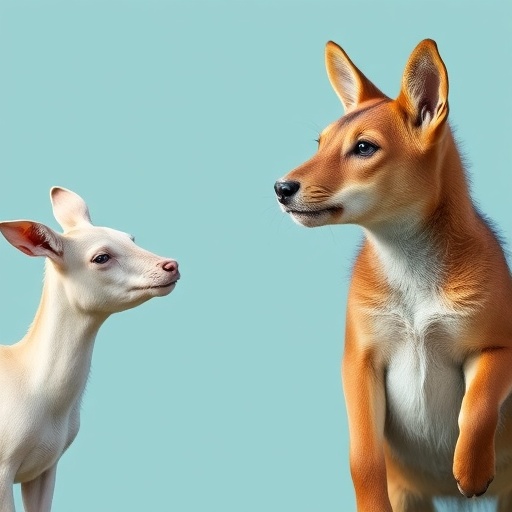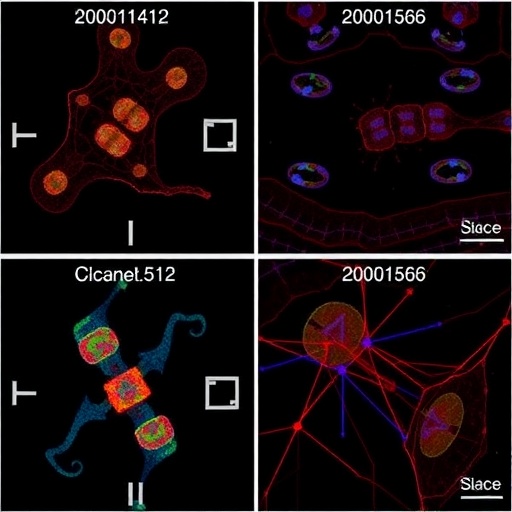
A groundbreaking study has emerged from the realms of evolutionary biology, presenting profound insights into the nuanced phenomenon of intraspecific color polymorphism in a specific insectâthe shining leaf chafer. This beetle, known for its iridescent exoskeleton, exhibits startling variations in color across different geographical locales. Research led by a formidable team, including Y. Lu, A. Kovalev, and L. Li, among others, delves deep into the structural underpinnings of these color variations, exploring not just how these changes manifest, but also elucidating the ecological and evolutionary forces that shape these patterns across different habitats.
The intriguing attributes of the shining leaf chafer, scientifically recognized as species within the family Scarabaeidae, are not merely aesthetic. These vibrant color patterns play crucial roles in the beetle’s survival, influencing mechanisms such as camouflage, mate selection, and thermoregulation. This latest research attempts to dissect the underlying genetic and environmental factors contributing to these color variations, presenting a unique perspective that combines molecular biology with ecological dynamics.
Color polymorphism is a phenomenon that signifies the existence of two or more distinct colors or forms among individuals of a single species. Although widely studied in various taxa, the shining leaf chafer presents a particularly captivating model due to its pronounced color divergence observed across different populations. The paper provides detailed descriptions of the morphological characteristics of these beetles in relation to their color variations and habitat specificity, thereby clarifying how these traits are strategically adapted to their environments.
In scrutinizing the color variation, the researchers utilized both genetic analysis and ecological surveys to outline the factors that determine coloration in this beetle. The study reveals a complex interplay between pigmentation genes and environmental cues. For instance, the presence of specific pigments and the structural colorationâresulting from microscopic surface structuresâare shown to be tailored not only by genetic predispositions but also by factors such as local climate, habitat types, and available food sources.
The authors employed advanced imaging techniques to examine the microstructures responsible for the beetles’ color displays. Through high-resolution microscopy, they illustrated how these structures manipulate light, resulting in the vibrant hues that characterize different populations. These microscopic investigations reveal that the layered chitin structures and their spatial arrangement contribute significantly to the perceived color, an area that had previously been underexplored in chafer studies.
Additionally, the research highlights the potential adaptive significance of color variations. Variations in pigmentation can serve as important adaptive traits, offering advantages in terms of visibility or camouflage depending on the environment. For example, populations residing in densely vegetated regions may showcase darker shades to blend in more effectively, while those in barren environments may adopt brighter colorations that help them reflect harmful solar radiation.
The study further posits that these color traits may influence reproductive success, where females might select mates based on visual preferences associated with coloration. This sexual selection is an area of keen interest, as it emphasizes the importance of aesthetic characteristics in natural populations. Such dynamics underscore the evolutionary pressures shaping these color variations, as the interplay of survival and reproduction impacts the populations over generations.
Apart from the intrinsic biological significance, the researchers also touch on the broader implications of their findings. Understanding these patterns of intraspecific variation can provide critical insights into how species adapt in the face of environmental changes, including climate change and habitat loss. The ability to generalize from the shining leaf chafer to other species exhibiting similar polymorphic traits can contribute to the overarching field of conservation biology, helping to inform strategies to protect biodiversity.
The methodology employed in this research is noteworthy, featuring a combination of fieldwork and laboratory analysis. Extensive sampling across various geographical locations allowed for the comprehensive collection of specimens, ensuring robust data for the subsequent genetic analysis. This rigorous approach reinforces the credibility of their findings and highlights the importance of multidisciplinary research in unraveling complex biological phenomena.
In light of the findings, the implications extend beyond the immediate biological context, inspiring future research pathways. The researchers propose a framework for examining intraspecific variation in a broader taxonomic context, encouraging fellow scientists to adopt similar methodologies. Such collaboration across various fields can lead to a more holistic understanding of biodiversity and its intricate threads of connection.
As we delve deeper into the nuanced world of the shining leaf chafer, this research has illuminated an essential aspect of evolutionary biology. It poses critical questions about the role of color in survival and reproduction, drawing attention to the delicate balance of forces that shape the diversity of life on our planet. With ongoing advancements in genetic technologies and ecological modeling, the future of such research promises to unlock even more mysteries hidden within the interstices of nature.
In conclusion, the study on the shining leaf chafer not only advances our understanding of color polymorphism but also emphasizes the intricate connections between genetics, environment, and evolution. As science continues to bridge various disciplines, it stands as a testament to the wonders inherent in our natural world, beckoning us to explore and protect the biodiversity that surrounds us. This research not only contributes to the academic discourse but also serves as a clarion call for conservation efforts, ensuring that the vivid tales of color continue to unfold across the landscapes of our ecosystems.
Subject of Research: Intraspecific color polymorphism in shining leaf chafer
Article Title: Structural background of intraspecific color polymorphism and the driver of geographic patterns in a shining leaf chafer
Article References:
Lu, Y., Kovalev, A., Li, L. et al. Structural background of intraspecific color polymorphism and the driver of geographic patterns in a shining leaf chafer. Front Zool 22, 18 (2025). https://doi.org/10.1186/s12983-025-00571-5
Image Credits: AI Generated
DOI:
Keywords: color polymorphism, ecological adaptation, shining leaf chafer, genetic analysis, evolutionary biology
Tags: camouflage and mate selection in beetlesecological dynamics in beetle evolutionecological factors in beetle colorationevolutionary biology of beetlesgenetic basis of color variationsgeographical variation in insect colorintraspecific color variationsiridescent exoskeletons in insectsmolecular biology of color patternsScarabaeidae family characteristicsshining leaf chafer color polymorphismthermoregulation in shining leaf chafers




